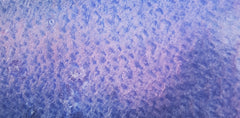Watercolor is one of the most widely used media in both classical and contemporary art. It works with light in letting us peer carefully through each layer of paint thus it is known for its capabilities to depict translucency and depth.
Artists used to create their watercolors personally-preparing everything from grinding pigments to packaging their own paints in shells or dishes. Today, various commercial companies have refined trademark recipes and processes to bring us the best paints in terms of quality and handling. So, with the finest tools at hand, what should we know to get started with our watercolor journey?

Composition
Watercolor is primarily composed of pigments, a water-soluble binder, and other additives. Pigments may come from organic materials (plants and insects), inorganic materials (minerals and rocks), or they can also be man-made or synthetic whilst water-soluble binders like processed Gum Arabic comes from resin. Other additives like preservatives and honey add to the character of certain watercolors affecting their shelf life or how easily they can be handled.
Click below to see how Sennelier refines their watercolors to bring artists the best professional products.
How Sennelier Watercolors Are Made
Forms
Today, watercolor is available in two major forms:

Watercolor is available in “full” or “half” pans. The paints are either poured directly into the pans or dried after preparation, cut to size, and transferred to pans for packaging. Paint pans are available in sets and individually. They are handy as they are “ready-to-go” for direct use; simply rub them with a wet brush and let pans dry after use.

Watercolor is also available in tubes. In this form, paints are kept creamy for extended periods of time. The mixture of paint in tubes is usually the same as that in pans. Tube sizes vary in sizes and are available in sets and as individual pieces. This is usually more cost-effective as you get more paint for your money’s worth. Paints may be squeezed unto empty pans or palettes.
Characteristics of Watercolor Paint
T : Transparent
O/T : Semi-opaque
O : Opaque
Transparency in watercolors provides venue for light to pass through all subsequent color layers achieving depth and richer color body in paintings. Opacity in watercolors, on the other hand, blocks off light thus hindering the clarity of sub layers.

Transparency Test
Using your select hues, paint over a thick black line as how you would by swatching your colors. Once the swatch is completely dry, the results are apparent. Some colors obviously cover the black line- these are the more opaque colors whereas those that are not seen more transparent.
As transparency is widely sought after in watercolor, opacity may also play as a key element in paintings. Opaque colors, especially those that are of lighter hues, may be used at the end of painting to add highlights that you may have missed to leave out
Staining Property
Watercolor when fully dry, unlike other media, may be reactivated with water. However, this aspect differs by degree. Some colors are very strong and stain intensely thus they are difficult to lift once applied. On the other hand, some colors are non-staining, making it easy to erase or lift from the paper. It is good to do a "Lifting Test" to see which colors are hard to erase and which are more forgiving.
Lifting Test

Test your colors by trying to erase or lift the colors from the paper with a brush. If you can clearly see the white of the paper, then your colors are non-staining but if there is a faded amount of paint that cannot be taken out, then colors are staining.
Granulating Property

Watercolor pigments react differently to water. Some pigments separate from their binders and become granulated, grainy or textured when completely dry while some dry to a very fine smooth finish. Colors in different brands differ in granulating properties so it's best to swatch colors to know their individual characteristics.
Lightfastness
Lighftastness pertains to the permanence of colors. Using the ASTM (American Society for Testing and Materials standard) guide to measuring qualities of artist paints, the categories are:
I. Excellent Lightfastness
II. Very good Lightfastness
III. Medium Lightfastness
IV-V. Light Sensitive or Fugitive
Permanence is dependent on the strength of paint pigments especially when exposed to direct sunlight or UV rays. Over the years, brands have been able to formulate synthetic pigments that mimic and replace fugitive natural colors like Alizarin Crimson and Madder Red, so artists today may create works that could stand the test of time. Lightfastness ratings conforming to the ASTM are usually found on paint labels.
It is always good to learn more about the nature of watercolors to fully know its creative possibilities. Watercolor continues to evolve which is why we hope that you (whether you are a hobbyist, beginner or professional artist) continue to explore, experiment, and create with watercolors!
CLICK THIS LINK TO SEE ALL OUR AVAILABLE WATERCOLORS!


